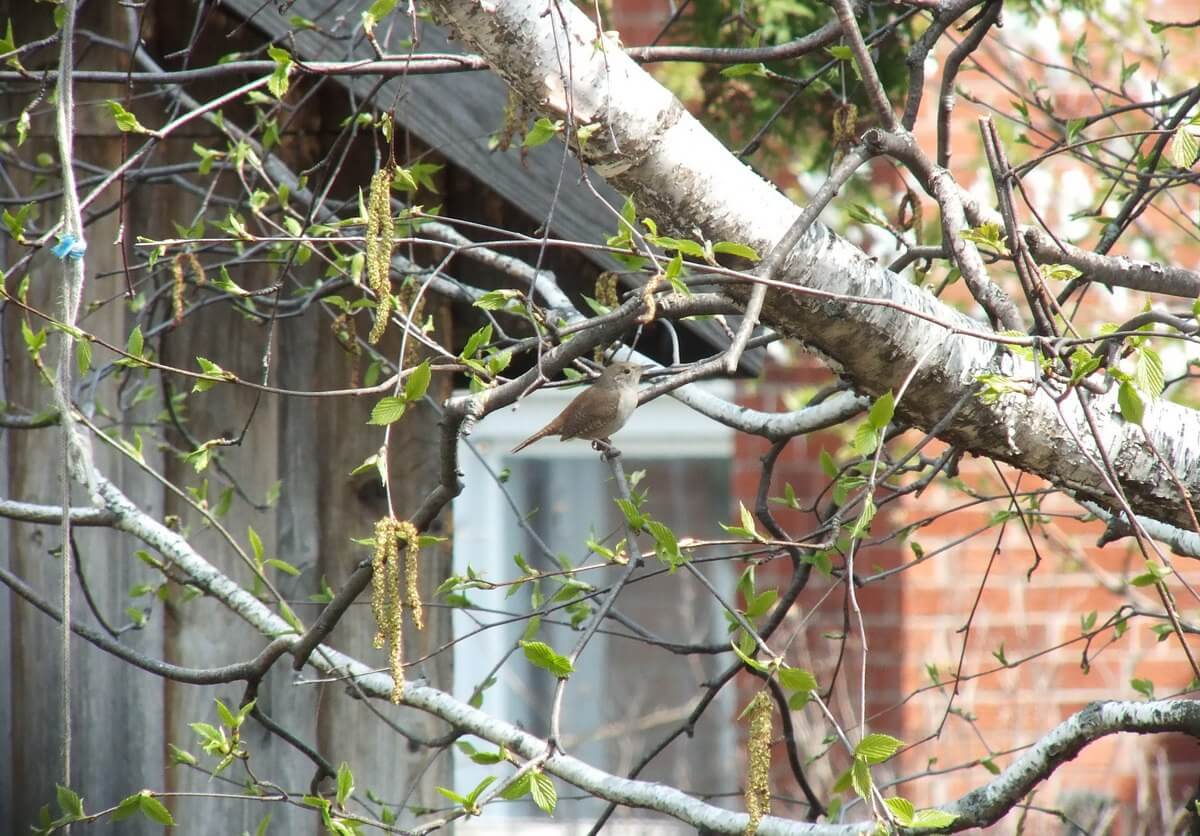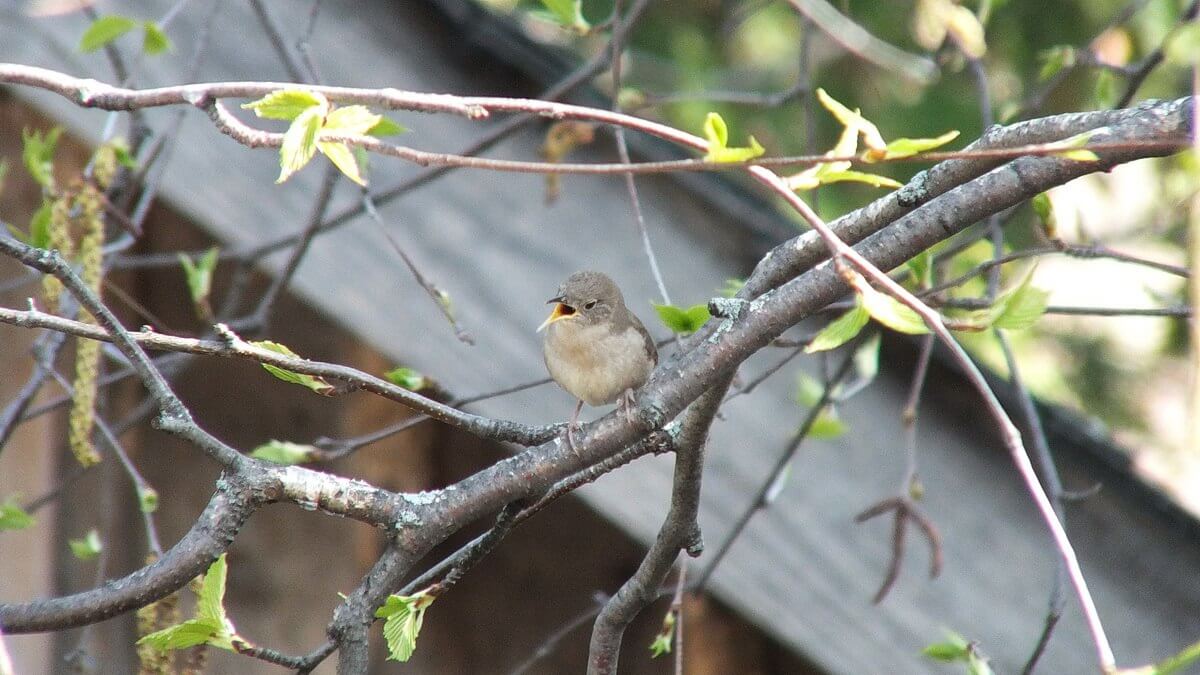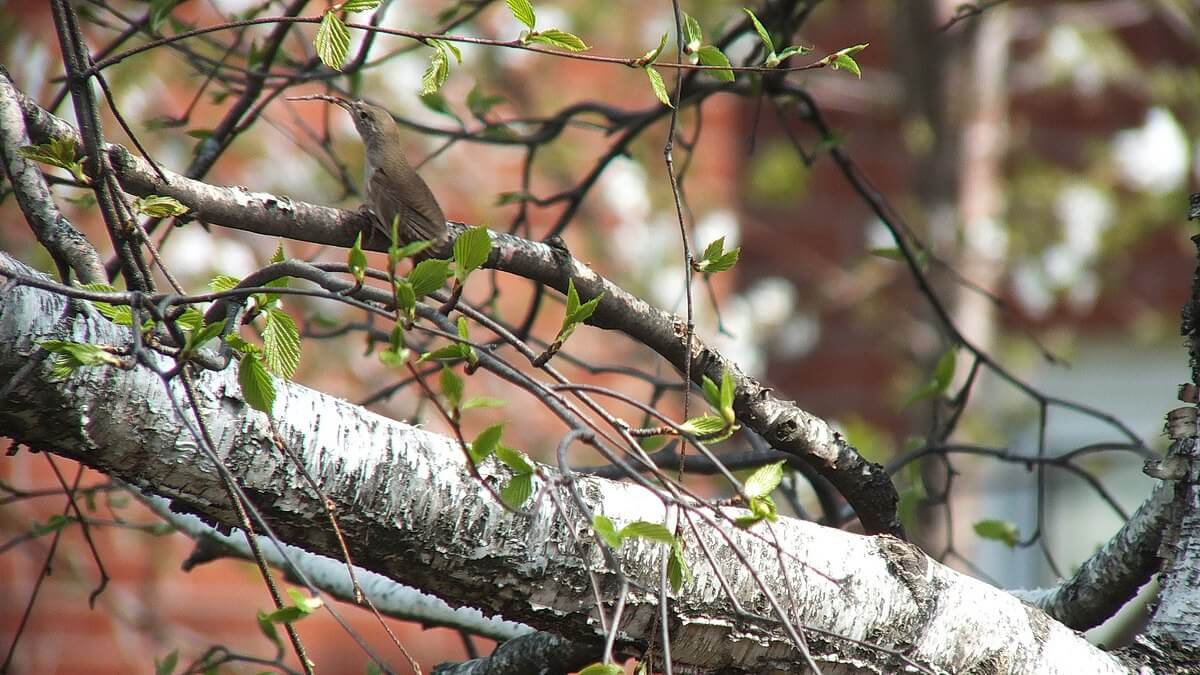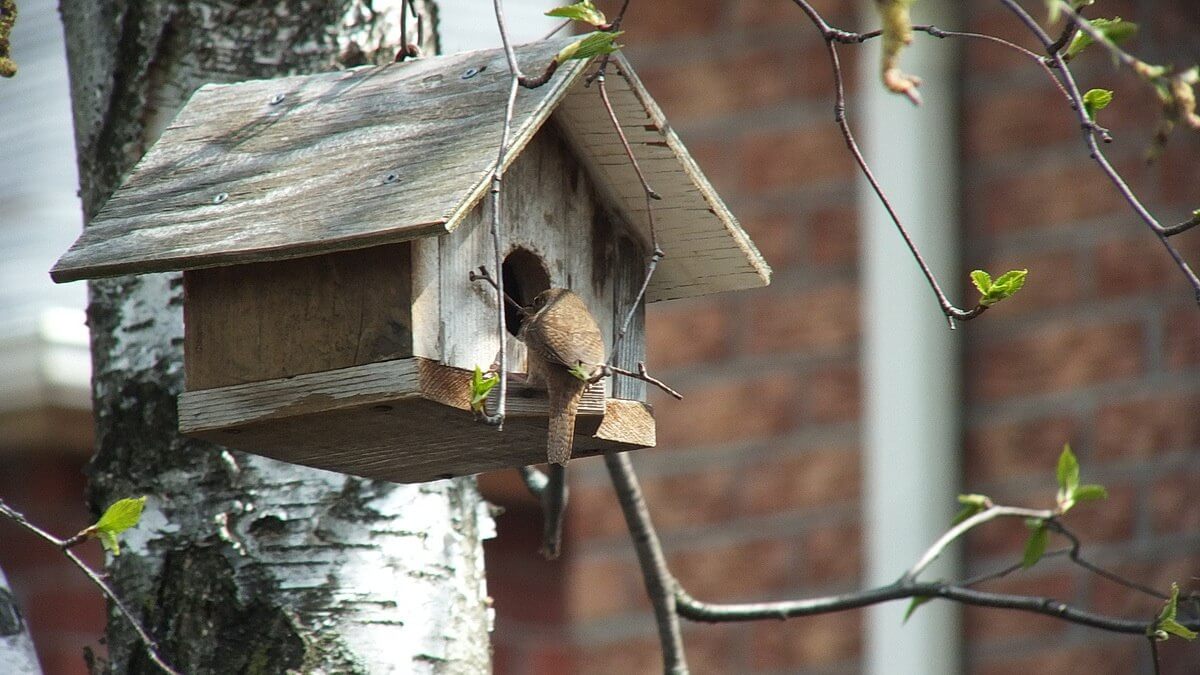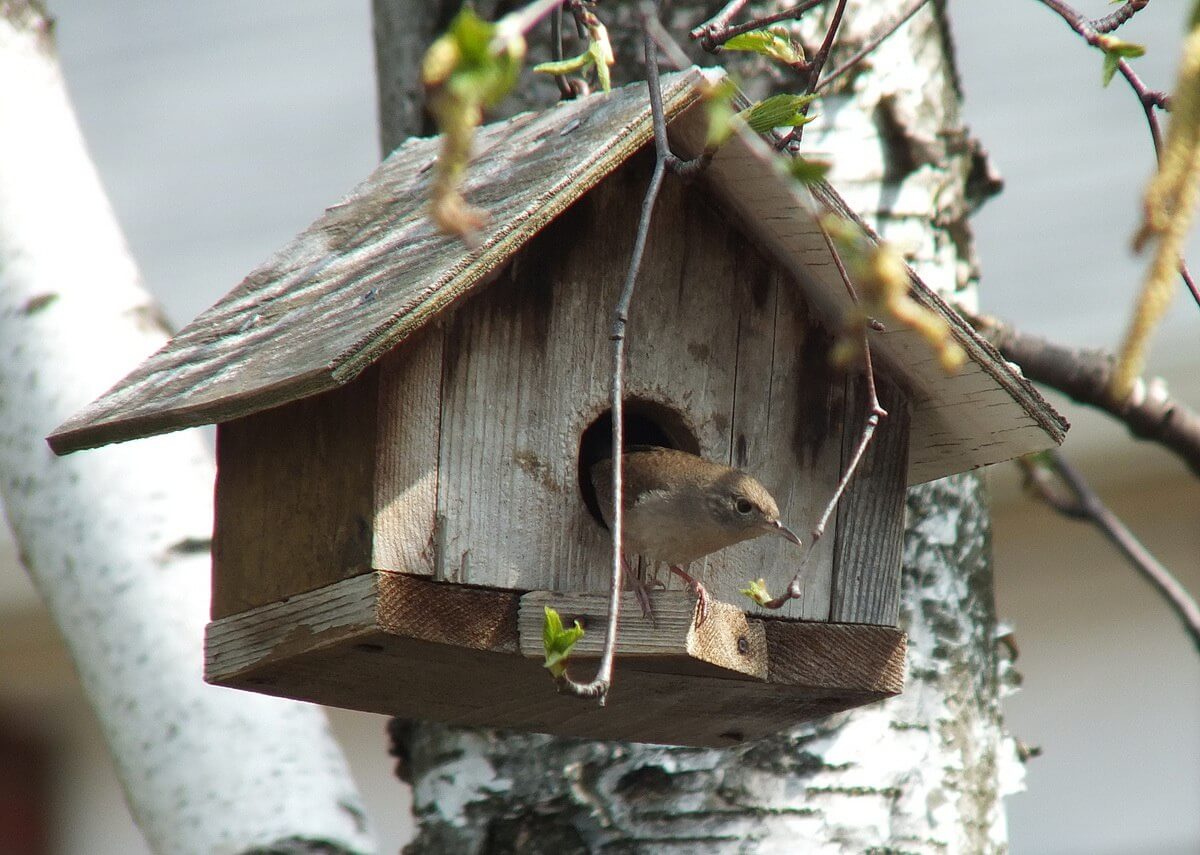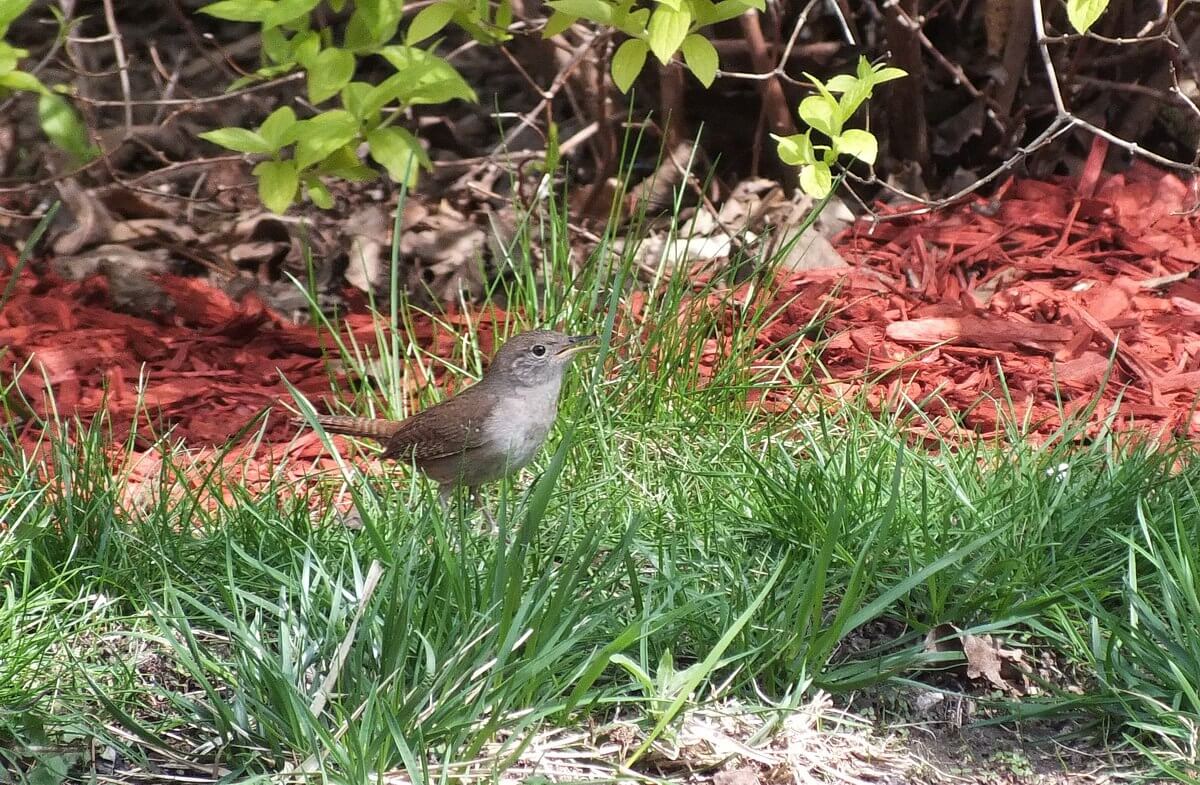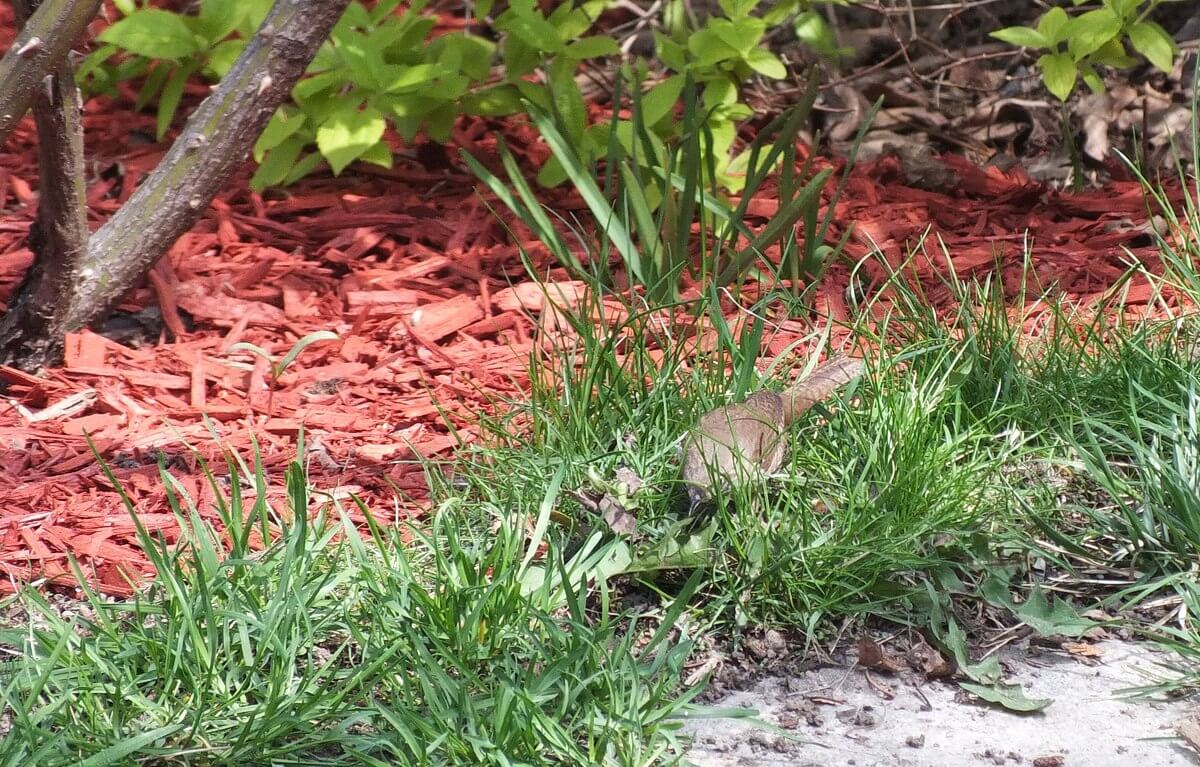A House Wren Builds A Nest In My Toronto Backyard
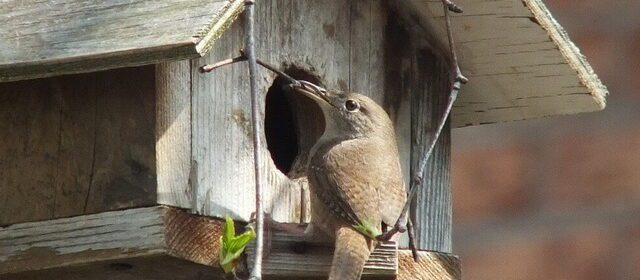
To our knowledge, Bob and I have never had a House Wren visit our backyard before, but this past spring, many new species stopped in at our small suburban property for a rest en route to their breeding grounds. Among them was this House Wren. We were delighted that it decided to stay put and build a nest in one of our birdhouses.
The House Wren seemed rather pleased with itself at fending off some House Sparrows despite having been chased away from another one of our birdhouses by some resident Chickadees only moments earlier. It sprang into song and twittered at length there on a branch of the birch tree just outside the door of its new abode. House Wrens are fierce adversaries when it comes to competing for a nest hole and will even challenge much larger birds to gain the site they want.
In some areas, Wrens are the main reason for nest failure of Chickadees, one of several songbird species to have their eggs and/or hatchlings dragged from a nest cavity by covetous Wrens. After having learned this fact, we considered ourselves lucky that the Wren didn’t oust the Chickadees from the birdhouse where they already had laid their eggs.
For several days, it would swiftly descend to the ground from the birdhouse, round up a few small twigs and discreetly return to deposit them inside.
House Wrens will use cavities of extremely varied types but most often a hole in a tree or a nesting box suits their needs. They are very adaptable and have been known to use unusual places such as the pocket of an old coat hanging on a clothesline, an old shoe, flowerpots in a shed, and even a cow skull left hanging on a tree.
It kept me busy one morning as I observed the Wren’s activity. At times, I had to scratch my head as I wondered what the Wren was thinking. Some of the twigs were simply too large to fit through the opening of the birdhouse, but with sheer determination, somehow it managed to force the bigger sticks inside.
House Wrens are one of the most widespread songbirds. When breeding, they can be found from Canada south through the West Indies and Central America all the way to the southernmost tip of South America. Their geographic range must include clearings scattered with trees, be they deciduous or coniferous, bushes and thickets, even at elevations as high as 10,000 feet.
I guess this House Wren found our combination of cedar and apple trees, flowering shrubs and birch trees to its liking. Because they are cavity nesters, House Wrens prosper wherever man-made structures are found owing to the abundance of nooks and crannies that offer nesting spots. My dad made this birdhouse a number of years ago, and it has been hanging unused in the birch tree for at least two summers. Last spring, some House Sparrows showed some interest in it, but that amounted to nothing.
I was fortunate one day when the House Wren was gathering nesting materials because, prior to that, the birdhouse opening had faced away from my kitchen window. A stiff breeze caused the nest box to swing around, thus affording me a continuous view of the Wren’s activity. The multitude of twigs transferred into the interior of the nest box would be used by the Wren to form a bed for its cup-shaped nest as well as a barricade at the entrance to protect the nest from intruders. We could see some good-sized twigs across the opening, a defensive wall against predators and cowbirds.
A male Wren is the one responsible for building the nest, and he is not let off easy. In order to attract a mate, he must construct a number of nests in the same area for the female’s inspection and approval. Upon acceptance of one of the nests, the female House Wren will line the small nest with feathers, hair and grasses being sure to include spider egg sacs. These are used strategically because, once hatched, the young spiders will consume any parasites that threaten the survival of the baby birds.
The House Wren worked up quite an appetite constructing the nest, and around noon one particular day, he began foraging for insects and other things to eat. I saw the Wren zipping through the low branches of the shrubs and moseying in underneath my gooseberry bushes. Wrens like to keep low, and when on the ground, they move about with quick hops. A wide variety of insects, including earwigs, flies, and beetles, constitute the bulk of their diet, but they also eat spiders and snails.
By this time, I was confident enough to venture out onto the backyard deck in an effort to keep the Wren in sight, and it didn’t seem to take any notice of my presence. Knowing that its predators include cats, opossums, raccoons, woodpeckers and squirrels, all of which are fairly common in my backyard, I did worry for the Wren’s safety.
A House Wren is a fairly small bird with no brightly coloured feathers, a flat head and a relatively long, curved beak. Its perky demeanour is the result of the cocky angle at which the Wren holds its longish tail, which is often high above its body. It was the narrow black bars on the brown tail that helped Bob and I initially identify this bird.
A House Wren may have a drab appearance, but its rich, bubbly song makes up for any lack of show. It is during nesting season that House Wrens sing joyously for hours on end, but the remainder of the year, they are quite shy and reserved birds that go unnoticed.
The House Wren seemed to have a favorite branch on which to perch, and over the course of many days was seen delivering his cheerful and energetic song from the same spot. It brought Bob and I much pleasure for a couple of weeks, but then the Wren seemed to disappear. Bob did see it checking out another couple of birdhouses on our property, so perhaps a female Wren selected one of the Wren’s alternate nests for pairing. Nevertheless, it was delightful to watch the process while the Wren was on sight.
Frame To Frame – Bob and Jean


